WWII veteran Louis Graziano reflects on his D-Day experience: ‘I didn’t think about living and dying’
Fox News contributor Joey Jones sits down with the Louis Graziano, the last living witness to Germany’s World War II surrender on ‘Fox & Friends Weekend.’
President Franklin D. Roosevelt trumpeted America's foundation of faith to inspire the nation in its finest hour: D-Day, June 6, 1944.
"Almighty God: Our sons, pride of our nation, this day have set upon a mighty endeavor, a struggle to preserve our republic, our religion and our civilization, and to set free a suffering humanity," FDR said resolutely on D-Day, leading a prayer that crackled from radios coast to coast and to service members and occupied nations around the globe.
Some Americans believe that his stirring call to spiritual arms can unite the nation once again and pay tribute to the sacrifice and commitment of our military and veterans.
ON THIS DAY IN HISTORY, JUNE 6, 1944, US AND ALLIES INVADE NORMANDY IN GREATEST MILITARY INVASION
"FDR’s prayer seemed to bring everybody together," said Chris Long of Akron, Ohio, leader of the D-Day Prayer Project, which installed the prayer permanently at the National World War II Memorial in Washington, D.C. in 2022. "We hope it can speak to generations to come."
Head of the Christian Alliance of America, Long launched the effort in 2011 to get the rousing text of Roosevelt’s prayer, all 525 words of it, engraved in perpetuity at the national memorial.
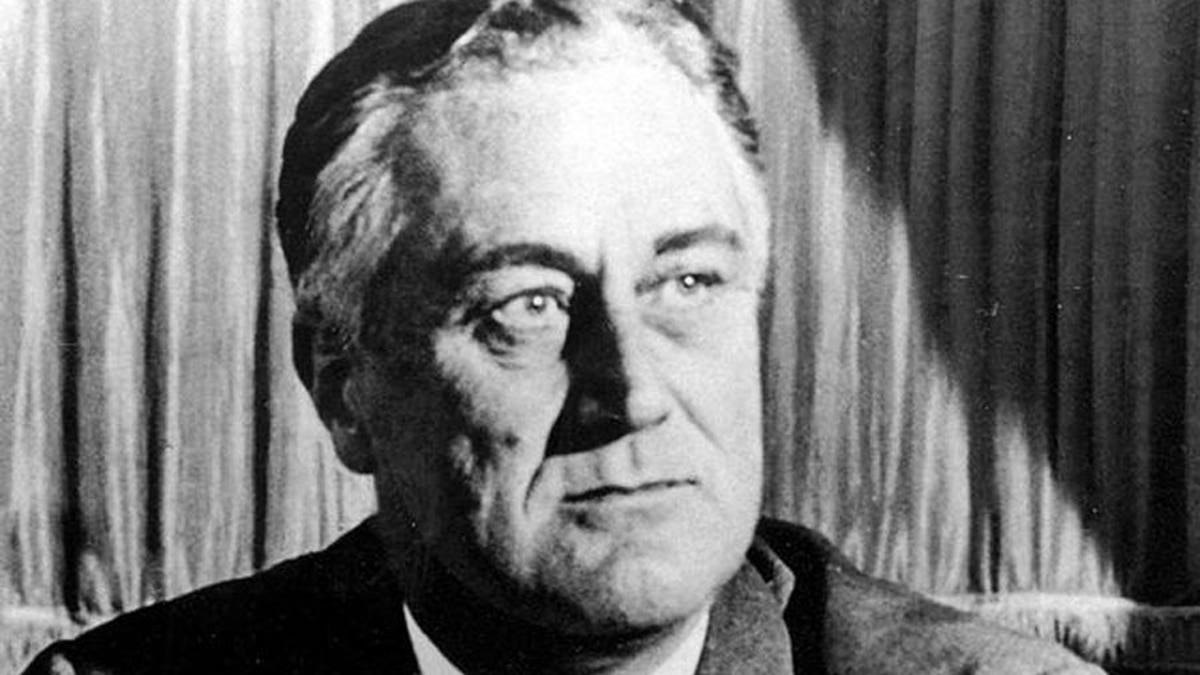
Franklin D. Roosevelt, the 32nd president of the U.S., called for the spiritual mobilization of the American people on June 6, 1944.
The WWII Memorial Prayer Act, sponsored by Sen. Rob Portman, R-Ohio and Rep. Bill Johnson, R-Ohio, was passed unanimously by the Senate in 2014 and enjoyed overwhelming bipartisan support in the House two weeks later.
President Obama signed the bill into law on June 30, 2014, but no tax dollars were allotted to the project.
The permanent memorial features brass plates engraved with the prayer mounted on a granite base.
Long led a group in 2019, on the 75th anniversary of D-Day, that installed a temporary tablet listing the text of the prayer as a "placeholder," he said, for the future permanent installment within the National World War II Memorial's Circle of Remembrance.
WORLD WAR II'S D-DAY: PHOTOS REVEAL WORLD'S LARGEST AMPHIBIOUS INVASION
Funding for the permanent installment has come in fits and starts from private sources and citizens, most notably a $2 million donation by the Lilly Endowment Inc., said Friends of the National World War II Memorial executive director Holly Rotondi.
She called the effort "a real labor of love."

An artist's rendering is shown before its opening of the FDR prayer tribute at the National World War II Memorial in Washington, D.C. (Friends of the National World War II Memorial/Oehme van Sweden & Associates)
The memorial features brass plates engraved with the prayer mounted on a granite base.
Spiritual mobilization of Americans
Roosevelt called for the spiritual mobilization of the American people as the massive D-Day invasion force stormed by air and sea into Normandy, France.
The U.S. and the Allies landed 160,000 troops in France on the first day alone. The effort was supported by tens thousands of other members of the multinational armed forces who manned warships and aircraft.
The young lives of every soldier, sailor and airman hung upon the outcome of the invasion.
The nation awoke on June 6, 1944, to learn that its heroic youth crawled from the sea and fell from the sky overnight in an effort to wrest an enslaved Europe from Hitler's clutches.
Americans knew that the young lives of every soldier, sailor and airman, along with the fate of the free world, hung upon the outcome of the invasion.
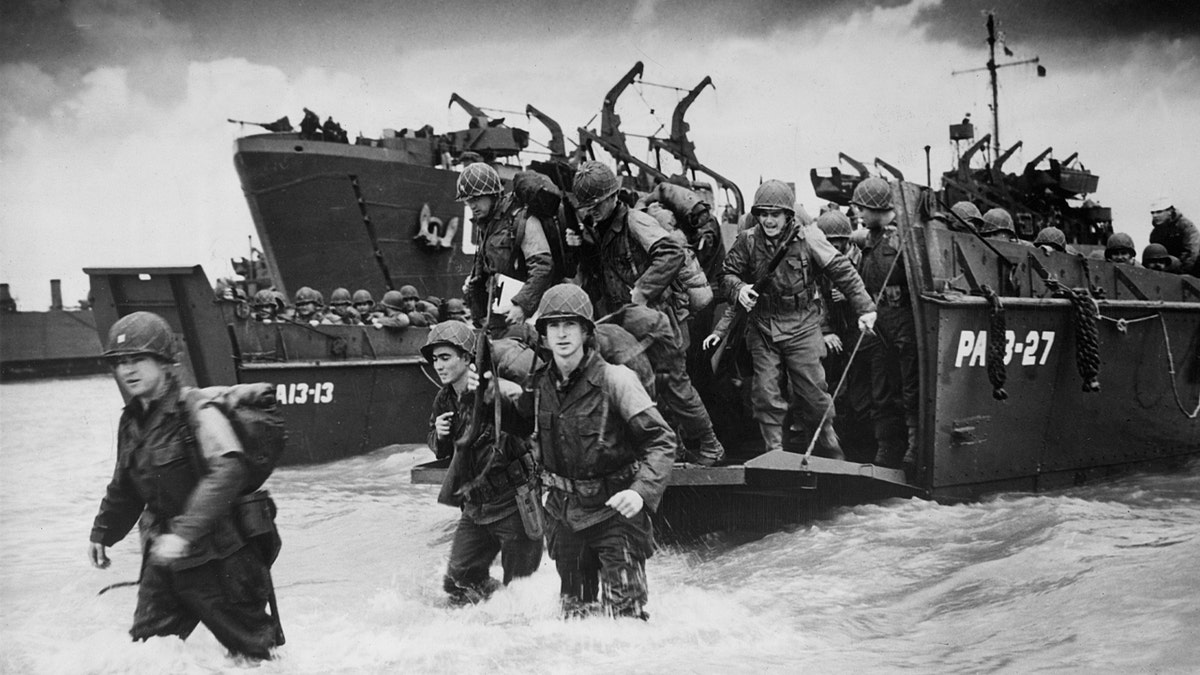
Reinforcements disembark from a landing barge in Normandy during the Allied Invasion of France on D-Day. (Hulton Archive/Getty Images)
Roosevelt steeled frightened mothers and fathers, and a worried but determined nation, for the shocking human cost to come.
"Men's souls will be shaken with the violences of war," the president said soberly.
MEET THE AMERICAN WHO HONORS THE MEMORY OF 200,000 FALLEN WAR HEROES
"Some will never return," he said. "Embrace these, Father, and receive them, Thy heroic servants, into Thy kingdom … I ask that our people devote themselves into a continuance of prayer ... And, O Lord, give us faith. Give us faith in Thee; faith in our sons; faith in each other; faith in our united crusade."
"Men's souls will be shaken with the violences of war." — FDR
More than 4,400 Americans were killed on D-Day alone, according to figures from the National D-Day Memorial in Bedford, Virginia.
By the time the battle for Normandy was won in August 1944, as many as 29,000 American troops were dead and more than 100,000 were wounded or missing in action.
The president wrote the prayer himself, with the help of his daughter Anna and her husband John Boettiger, according to the Franklin Delano Roosevelt Presidential Library and Museum in Hyde Park, New York.

U.S. assault troops are seen landing on Omaha Beach during the invasion of Normandy on June 6, 1944. (Keystone/Getty Images)
FDR could be heard shuffling the pages as he delivered the address on June 6.
An estimated 100 million people worldwide heard Roosevelt's plea over the airwaves, said Long of the D-Day Prayer Project, including many of those living in fear in Nazi-occupied Europe.
‘Friends and salvation'
"The best part about the invasion is that I have the feeling that friends are on the way," young Anne Frank wrote hopefully in her diary on June 6, while secreted away amid a "huge commotion in The Annex" of an Amsterdam apartment, as BBC news of the landings crackled over the radio.
"The thought of friends and salvation mean everything to us!"
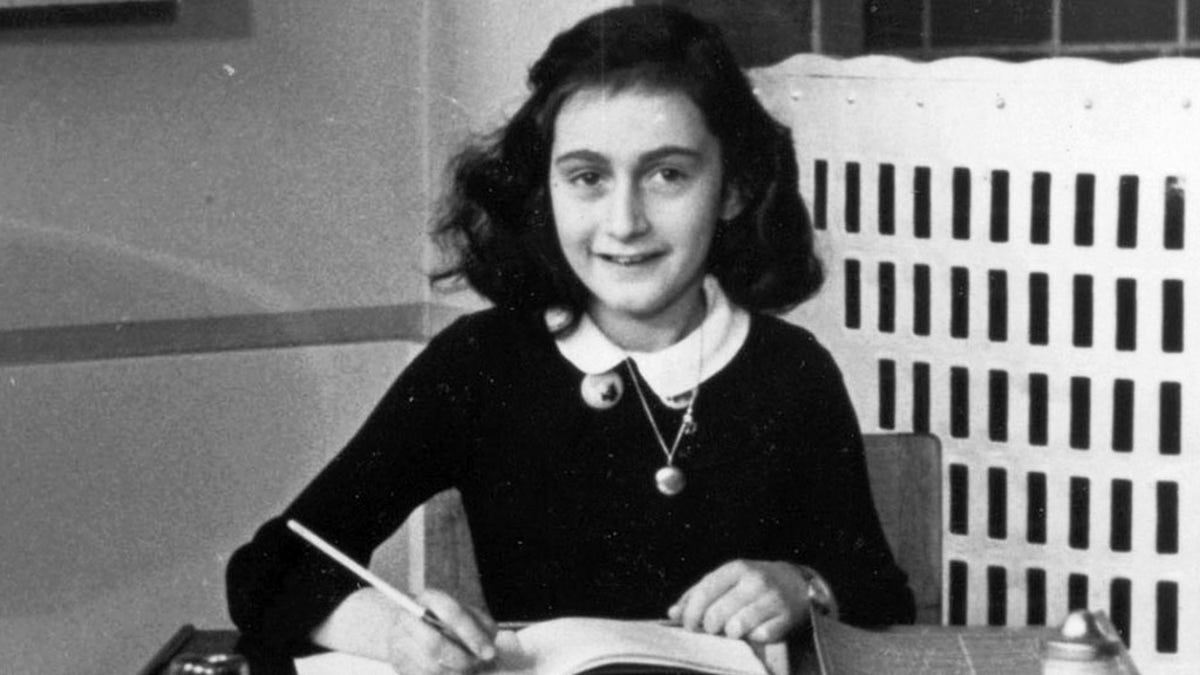
"I have the feeling that friends are on the way," Anne Frank wrote on June 6, 1944, after news of the D-Day invasion broke over BBC radio. (Wikimedia)
The 1959 Oscar-winning Hollywood version of the Jewish teen’s tragic story shows the Frank family and other residents of The Annex singing and dancing joyously in celebration of the D-Day landings.
Then they huddled around a concealed radio as Roosevelt’s prayerful voice invoked "Almighty God" and delivered hope into their hidden little corner of Holland.
D-DAY BATTLE SITES EVERY AMERICAN SHOULD SEE AS EPIC INVASION FASCINATION DRAWS MILLIONS TO NORMANDY
"We’ll need to be brave and endure the many fears and hardships and the suffering yet to come," the teenager wrote that day, her entry eerily echoing the words of promise and the warnings of reality that the American president shared in his global address.
Americans by the millions instinctively responded to the news of the D-Day invasion by flooding churches and synagogues.
Several sources called FDR's faith-filled entreaties that day and the resulting response the largest mass prayer in human history.
The text of it was reported the next day on the front page of almost every newspaper in America.
The New York Times published the prayer, dutifully transcribed word for word, on its front page on June 7 under a dramatic scripted Gothic headline, "Let Our Hearts Be Stout."
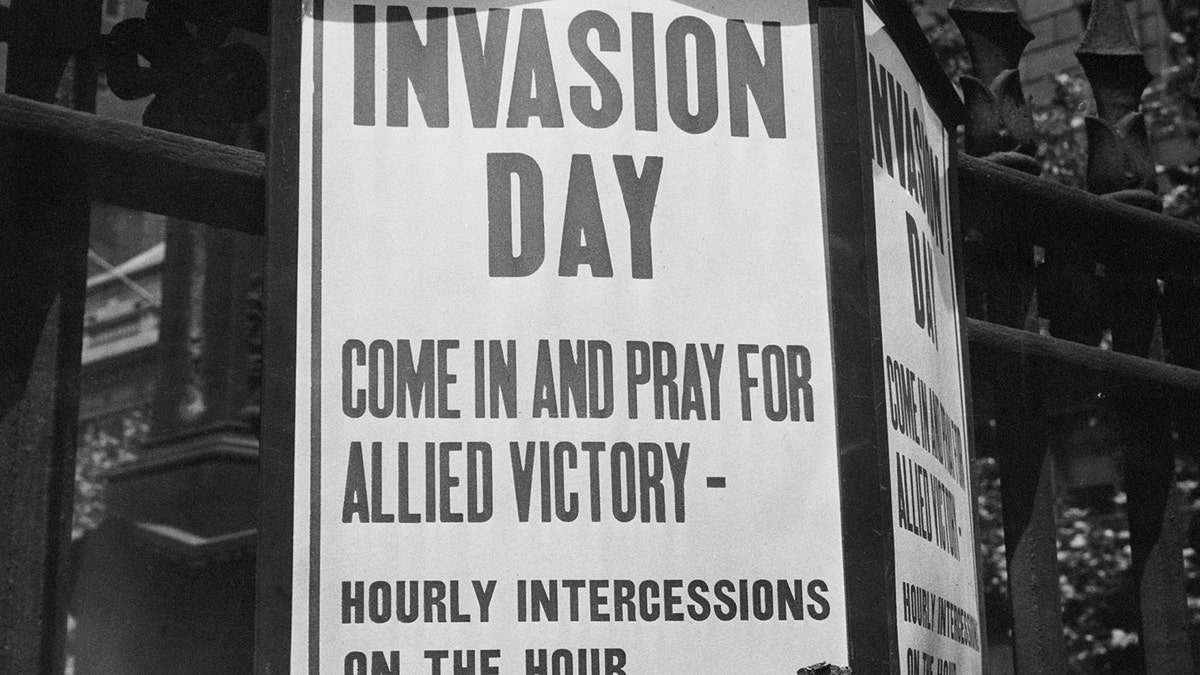
A sign outside Trinity Church in New York City is shown inviting worshipers to "come in and pray for Allied victory" during the invasion of Normandy on D-Day on June 6, 1944. (FPG/Hulton Archive/Getty Images)
Americans by the millions instinctively responded to the news of the D-Day invasion by flooding their churches and synagogues.
"The impulse to pray was overwhelming," wrote author Stephen Ambrose in his book, "D-Day, June 6, 1944: the Climactic Battle of World War II."
"Across the United States and Canada church bells rang ... as a solemn reminder of national unity and a call to formal prayer. Special services were held in every church and synagogue in the land. Pews were jammed with worshippers," he wrote.
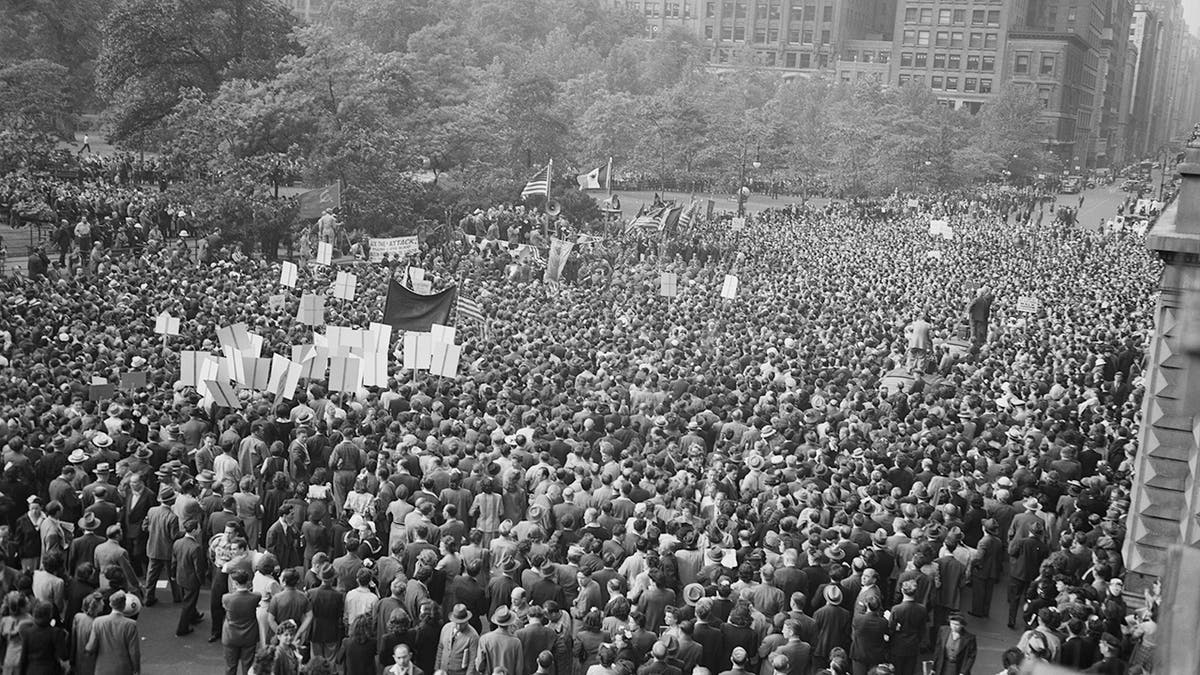
An enormous crowd gathered in Madison Square Park on D-Day in New York City on June 6, 1944. (FSA/Interim Archives/Getty Images)
Mayor Fiorello LaGuardia of New York City hosted an impromptu prayer service on D-Day before a crowd estimated as large as 50,000 people in Madison Square Park in Manhattan.
The bells of the historic Old North Church in Boston rang that morning, while schoolchildren "recited the Lord’s Prayer in every classroom in Massachusetts," The Boston Herald reported that day.
"The impulse to pray was overwhelming." — Stephen Ambrose
The Liberty Bell in Philadelphia rang for the first time in 109 years, among countless other chimes of support across the nation.
"Philadelphia Mayor Bernard Samuel tapped the bell … sending its voice throughout the country," wrote Ambrose. "Then he offered a prayer."
Churches and synagogues opened around the clock to handle the flood of Americans seeking strength, comfort and unity in the pews of their houses of worship.
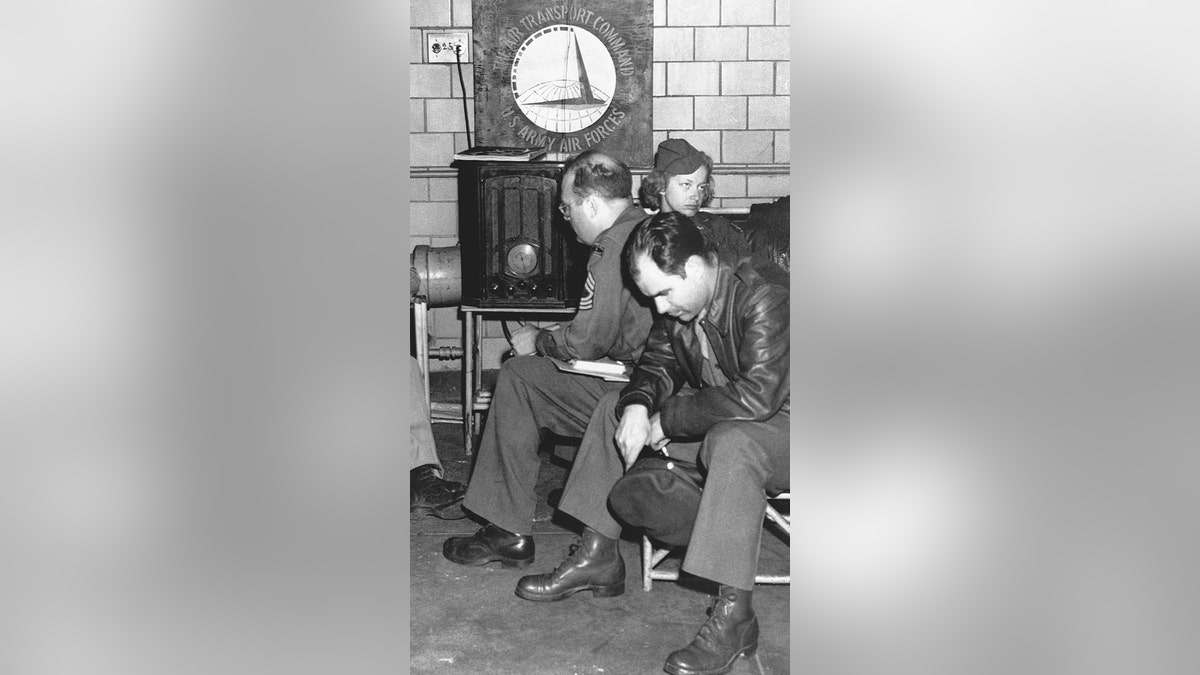
Military staff at LaGuardia Field in New York gather around a radio and listen intently as President Roosevelt prays for the Allied invaders of Normandy on D-Day, June 6, 1944. LaGuardia personnel were involved in the invasion. (Getty Images/Bettmann)
It's notable that D-Day was a Tuesday, not a typical day of church services, and the date of the invasion was a carefully guarded secret.
Still, Americans awoke that morning, heard the news and reflexively rallied around their faith.
"Led by President Roosevelt, the entire country joined in solemn prayer yesterday for the success of the United Nations armies of liberation," wrote reporter Laurence Resner in a front-page story on The New York Times on June 7, 1944.
D-DAY: EVERYTHING YOU NEED TO KNOW ABOUT THE HISTORIC WWII BATTLE
The newspaper's embrace of America's spiritual foundations wrapped around its editorial pages that day, too.
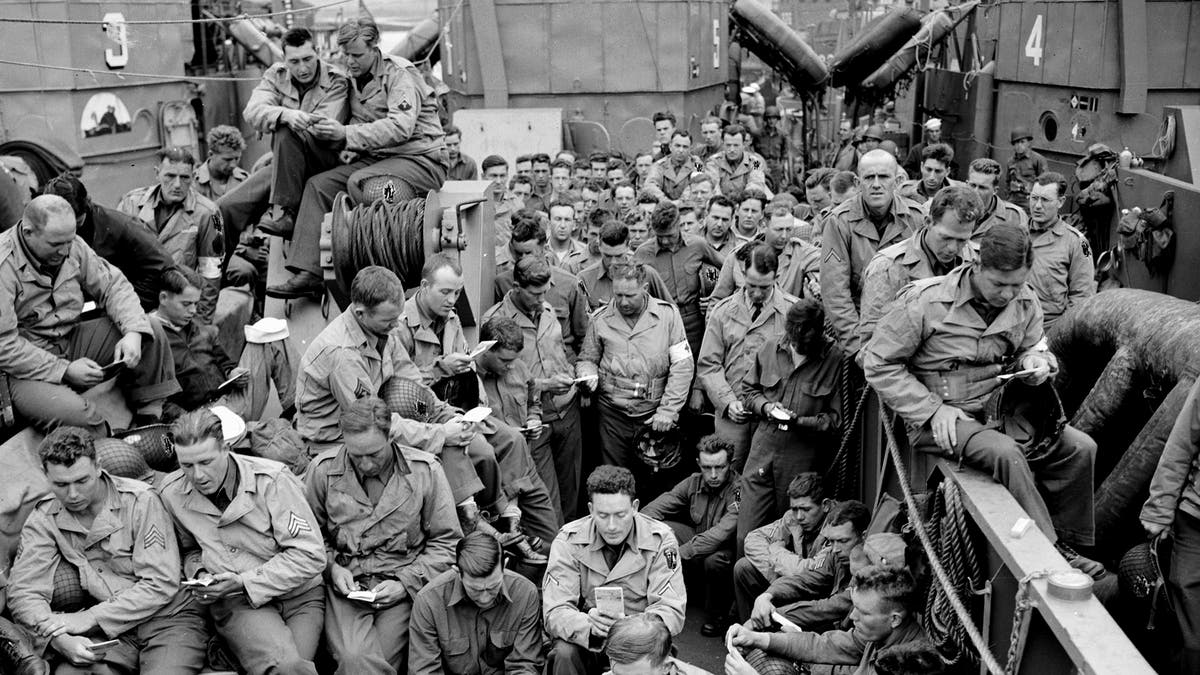
U.S. servicemen attend a service aboard a landing craft before the D-Day invasion on the coast of France. (AP Photo/Pete J. Carroll)
"This nation was born in the only revolution in history made in the name of God. It was born of the conception that the rights of man … are given him by God as the inalienable birthright of the human being," wrote The Times editorial board, led by Arthur Hays Sulzberger, great-grandfather of the outlet's current chairman, A.G. Sulzberger, on June 7.
The editorial appeared under the headline, "Let Us Pray."
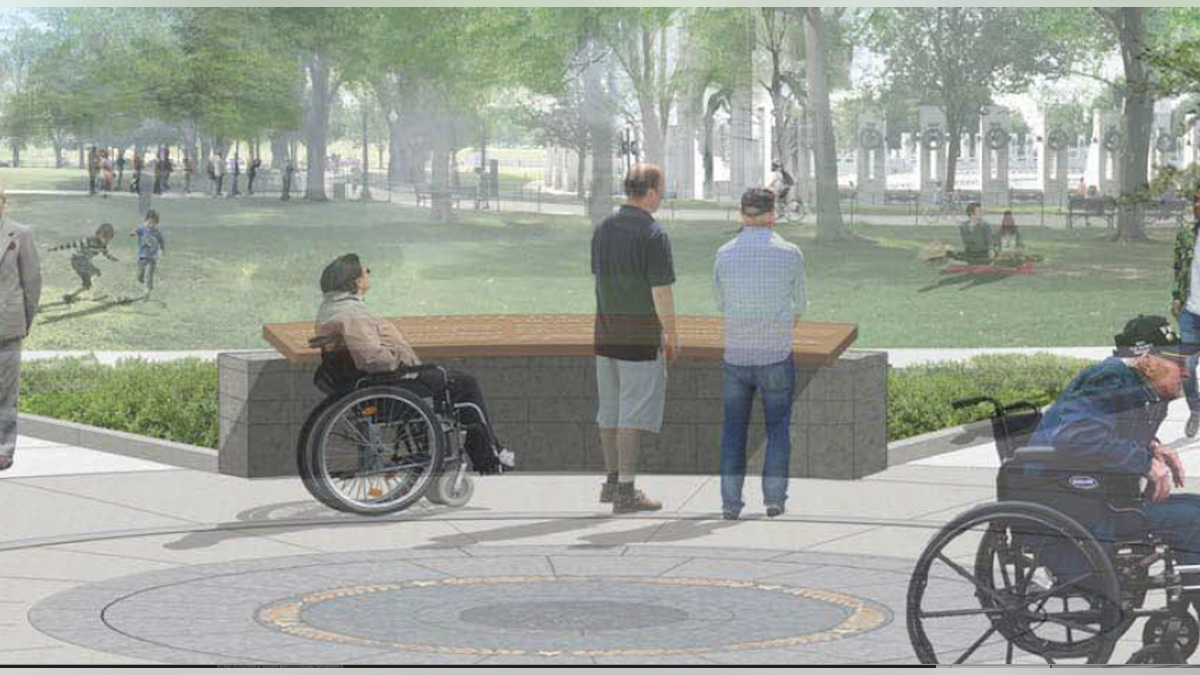
Another artistic rendering of the memorial commemorating FDR's D-Day prayer of June 6, 1944. The text of the prayer has been placed on tablets at the National World War II Memorial in Washington, D.C. (D-Day Prayer Project)
It continued: "We pray for the boys … we pray for our country … the cause prays for itself, for it is the cause of the God who created men free and equal."
Said Roosevelt to America, "Help us, Almighty God, to rededicate ourselves in renewed faith in Thee in this hour of great sacrifice."
‘Need the same continuance of prayer’
Long of the D-Day Prayer Project said he awoke one morning more than a decade ago, turned to his wife and told her of his idea of have the president's appeal to the faith of the American people etched for eternity at the nation's capital.
He said he hopes the FDR prayer memorial can help bring the nation together in faith once again.
CLICK HERE TO SIGN UP FOR OUR LIFESTYLE NEWSLETTER
As a sign of his hope, he cited the bipartisan support the bill received in 2014, allowing the project at the federal memorial to move forward.
"I think it's true right now that the nation is in turmoil," said Long.
CLICK HERE TO GET THE FOX NEWS APP
"This is a time when we need the same continuance of prayer that Roosevelt asked for on D-Day," he also said.
"Not one prayer, but a continuance of prayer."





















